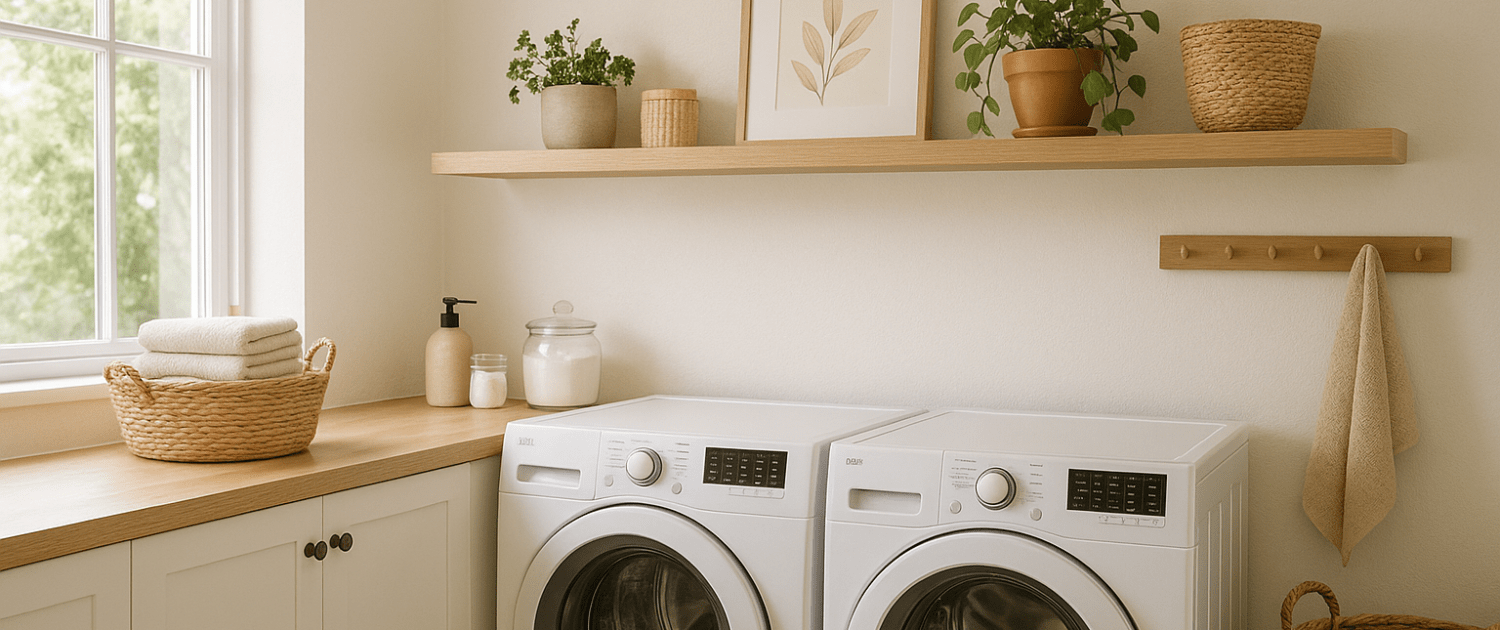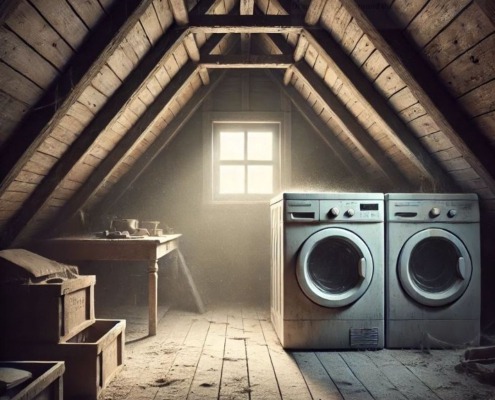Dryer Starts Then Stops? Here’s What to Check
Steven E / Wednesday May 7, 2025
There’s nothing more frustrating than having your dryer suddenly stop running in the middle of a cycle. However, many common issues that cause the dryer to start then stop after a few minutes can be diagnosed and fixed by yourself, saving you time and money.
We’ll walk you through the troubleshooting process and necessary steps to identify potential problems. Armed with the right knowledge and tools, you’ll be able to tackle these issues with confidence.
With some basic knowledge and the right approach, you can revive your gas dryer and get it running smoothly again. So, let’s get started with our troubleshooting journey and bring life back to your dryer!
If you find out that you need any replacement parts for your dryer while you’re troubleshooting, you can enter your model number at AppliancePartsPros.com to order them. Most orders arrive in just two business days, and we have thousands of free guides to show you how to install your new parts.
The information in this article may not apply to your specific appliance model. We recommend consulting your manufacturer’s documentation or contact us with any questions.
Common causes
Incoming power problem
This can occur if a circuit breaker has tripped or if the power cord is not firmly plugged into the wall receptacle. A loose plug can lead to intermittent power supply to the dryer, causing it to stop spinning during the cycle.
Door catch and strike
If the door catch is obstructed or damaged, the dryer door may pop open slightly, triggering the door switch to open and shutting off the dryer.
Door switch
The door switch is responsible for allowing the dryer to start and run once the door is fully closed. A faulty door switch can incorrectly indicate that the door is not closed, causing the dryer to stop running.
Drive motor
A failing drive motor can result in the dryer struggling to start, becoming noticeably noisy during operation, and potentially overheating and stopping before the clothes are fully dried. After the motor cools down for a period, it may run again briefly before stopping.
Control board/timer
The electronic control board or timer in the dryer governs the timing and execution of various functions. The wiring and connections on the control board or timer may become loose or damaged.
Safety precautions
When working on any appliance, remember to keep safety first. Here are some tips to keep in mind:
- Always power off and unplug your appliance or switch off the circuit breaker before attempting any maintenance or replacement work. This keeps you safe by preventing any risk of injury from electric shock.
- Turn off the water supply at the outlet before beginning repairs to any appliance parts that hold water. Have towels ready for any residual water in the system when removing parts.
- Wear insulated work gloves to protect your hands from sharp metal parts, pinching hazards and debris.
- Don’t test wiring with a multimeter for live voltage if you’re unfamiliar with how to prevent short circuiting when testing.
- When working with wires, avoid touching any exposed wires or terminals. If you need to touch a wire, use a non-conductive tool or wear insulating gloves to prevent electrical shock.
- Take your time and don’t rush while working to prevent accidents and personal injuries.
- Work in a well-lit area so you can clearly see and access the interior parts.
- Clear your workspace of clutter and other obstacles. Keep children and pets away from the work area.
- Never work on internal parts with bare wet hands. Make sure the work area is completely dry.
- Check your user manual to see if there are specific installation or safety instructions for your part or appliance.
- Be gentle when handling or removing parts. Excessive force might damage the appliance or cause injury.
- Wear safety glasses when working with chemicals, dust or cleaning large debris to prevent injury.
- If the appliance has recently been used, give it plenty of time for any heating parts to cool down before working on it.
- Take pictures or make a note of wiring terminals or other connections before disconnecting to prevent any problems with reassembly.
Troubleshooting steps
Step 1: Incoming power
- Check the circuit breaker panel and ensure that the circuit breaker for the dryer is not tripped. If it is, reset it and try running the dryer again.
- Inspect the power cord and ensure it is firmly plugged into the wall receptacle. If the plug feels loose, unplug it and firmly reinsert it into the receptacle.
- If the problem persists, try plugging another appliance into the same receptacle to verify if it is providing consistent power. If not, consult an electrician to resolve any wiring issues.
Step 2: Door catch and strike
- Examine the door catch and strike for any visible obstructions or damage. Clear away any debris or objects that may be preventing the door from closing properly.
- If the door catch or strike is damaged, replace it with a compatible part as per the manufacturer’s instructions.
- Close the door firmly and run a drying cycle to check if the issue is resolved.
Step 3: Door switch
- Open the dryer door and locate the door switch, typically mounted near the door opening.
- Inspect the door switch for any visible damage or loose connections. Tighten any loose connections if found.
- Using a multimeter set to continuity mode, test the door switch for electrical continuity. Press and release the switch while checking for a change in continuity.
- If the door switch fails the continuity test or is otherwise faulty, it should be replaced with a new one following the manufacturer’s instructions.
Step 4: Drive motor
- Turn off the dryer and unplug it from the power source.
- Allow the motor to cool down for approximately 30 minutes.
- Inspect the drive motor for any visible signs of damage or wear.
- Restart the dryer and listen for any unusual noises or vibrations coming from the motor during operation.
- If the motor appears faulty or is making excessive noise, it should be replaced with a new one following the manufacturer’s instructions.
Step 5: Control Board/Timer
- Turn off the dryer and unplug it from the power source.
- Remove the control panel cover to access the control board or timer.
- Inspect the wiring connections on the control board or timer for any loose or damaged wires. Reconnect or repair as necessary.
- Examine the control board or timer for any visible signs of damage, such as burnt components or discoloration.
- If there are any obvious signs of damage or if the control board or timer is not functioning correctly, it may need to be replaced following the manufacturer’s instructions.
Additional information
Thank you for reading! We hope this guide helped you get your dryer working again.
If you have any other appliance repair needs or projects, don’t hesitate to explore our other troubleshooting guides and videos.
If you need replacement parts or some extra help with ordering them, grab your model number and head over to AppliancePartsPros.com, where you can chat with a pro, read our DIY blog and more.
Don’t forget to subscribe to us on YouTube and follow us on Facebook, Twitter and Instagram!
With nearly a decade of experience in providing top-notch customer service regarding appliance parts and repair, Steven enjoys sharing practical advice, troubleshooting tips, and interesting information to help readers stay informed.





